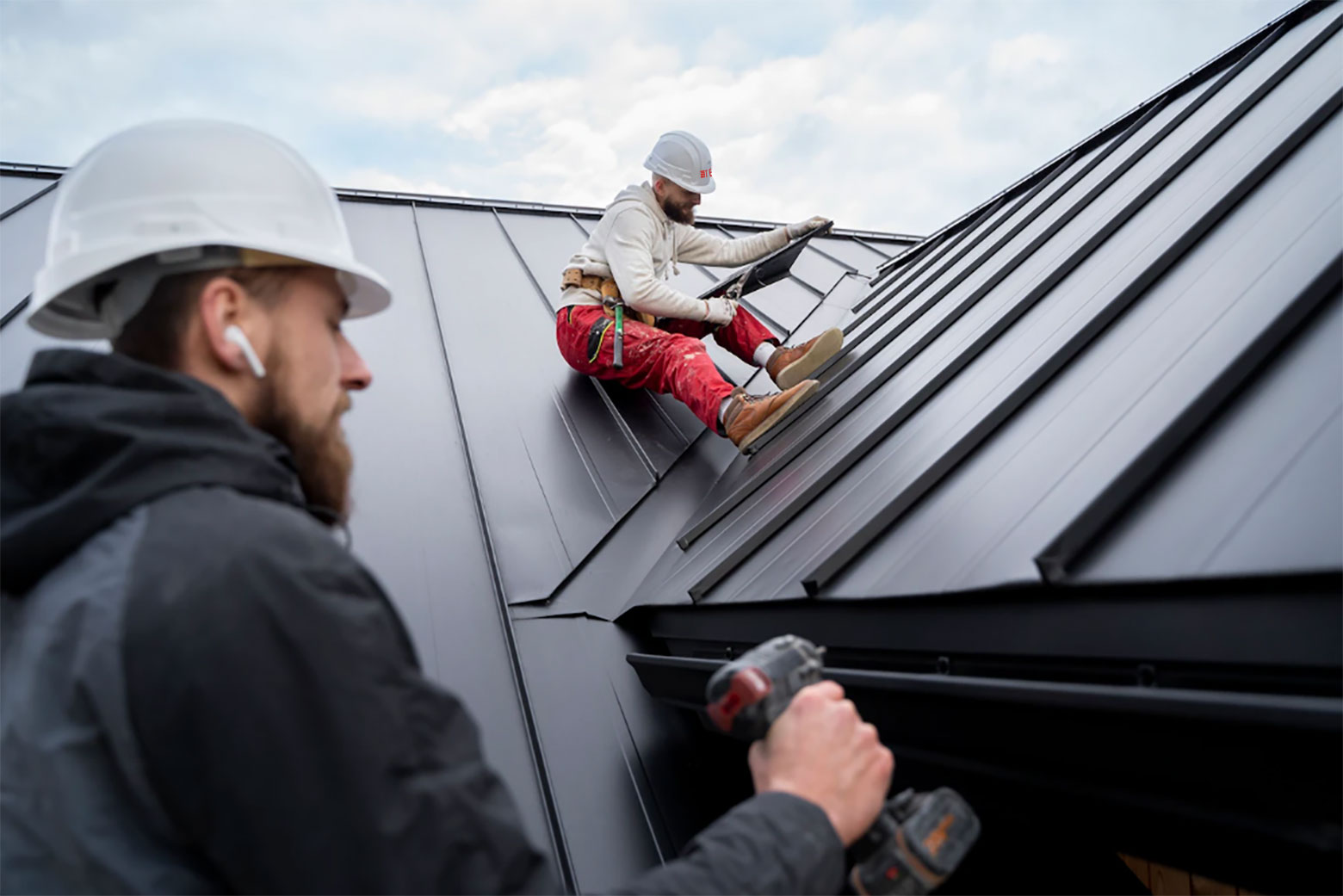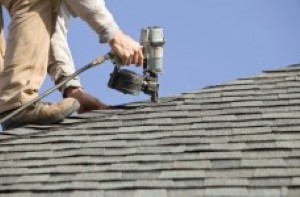Oahu Roofing: Reliable Roofing Solutions for Residences and Services
Wiki Article
Understanding the Different Sorts Of Roofs: A Comprehensive Guide for Homeowners
With an array of choices-- varying from the conventional gable to the modern flat-- each kind presents one-of-a-kind advantages and obstacles that ought to straighten with the home owner's ecological factors to consider and certain requirements. As we explore the complexities of numerous roofing kinds, it ends up being evident that one dimension does not fit all; the ideal selection may surprise you.Saddleback Roof
Saddleback roofs, characterized by their triangular shape, are among the most prominent roofing designs because of their simplicity and performance in dropping water and snow. This style features 2 sloping sides that meet at a ridge, permitting reliable water drainage and reducing the threat of water accumulation. The steep pitch generally related to saddleback roofs boosts their ability to deal with heavy rainfall, making them appropriate for numerous climates.Along with their functional advantages, saddleback roofs provide aesthetic adaptability. They can be adapted to different architectural styles, from conventional to contemporary homes. The design can also suit additional attributes such as dormer windows, which enhance natural light and ventilation in the attic room room.
In addition, saddleback roofs provide ample room for insulation, contributing to energy efficiency. Homeowners can select from a range of roof materials, consisting of asphalt tiles, steel, and ceramic tiles, further boosting customization alternatives.
Despite their benefits, saddleback roofs may require added assistance in locations susceptible to high winds or hefty snowfall. Overall, the gable roof covering continues to be a popular selection as a result of its blend of functionality, durability, and aesthetic allure.
Apartment Roofs
Level roofs are frequently recognized for their minimalist style and sensible applications, specifically in commercial and business settings (oahu roofing). These roof coverings feature a nearly straight or straight surface area, which permits easy construction and functional area usage. While they may lack the visual charm of angled roofs, flat roofings use various benefits, especially in urban atmospheres where making best use of room is essentialOne of the primary benefits of level roofs is their access. Homeowners can make use of the roof covering area for various functions, such as roof gardens, terraces, or photovoltaic panel setups. In addition, flat roofing systems are commonly much more affordable to keep and install compared to their sloped equivalents, as they need fewer products and labor.
Common materials used for level roof coverings consist of built-up roofing (BUR), modified bitumen, and single-ply membrane layers, each offering unique advantages. Overall, level roofings offer as a practical and versatile option for several home owners and companies alike.
Hip Roofs
Hip roof coverings are identified by their sloped sides that merge on top, creating a ridge. This layout is unique from gable roofing systems, as all 4 sides of a hip roof incline downwards toward the walls, giving a more steady framework. The angle of the slopes can differ, permitting for adaptability in architectural appearances and functionality.One of the main benefits of hip roofing systems is their ability to hold up against heavy winds and adverse weather. The sloped surface areas enable better water drain, reducing the threat of leakages and water damages. In addition, hip roofing systems use boosted attic room room, which can be made use of for storage or perhaps transformed into habitable locations.
Nonetheless, creating a hip roofing system can be more complex and expensive than less complex roof kinds, such as gable roof coverings. The additional product and labor associated with producing the slopes and making certain appropriate architectural stability can bring about higher expenditures. In spite of these downsides, many home owners prefer hip roofing systems for their sturdiness, aesthetic allure, and oahu roofing possibility for energy performance.
Mansard Roofs
Mansard roofs, often recognized by their special four-sided style, function two slopes on each side, with the reduced slope being steeper than the top. This building style, originating from France in the 17th century, is not only visually enticing but useful, as it optimizes the functional space in the upper floorings of a structure. The high lower slope enables even more clearance, making it a suitable choice for lofts or attics, which can be transformed into living areas.Mansard roofing systems are identified by their versatility, fitting various architectural styles, from typical to contemporary. They can be built with various materials, including asphalt roof shingles, slate, or metal, supplying house owners with an array of options to fit their choices and budgets. Additionally, the style permits the assimilation of dormer windows, enhancing natural light and air flow in the top degrees.
However, it is important to think about the potential downsides. Mansard roofings may call for even more upkeep due to the complexity of their style, and their high inclines can be testing for snow and rainfall drainage. Overall, mansard roofs integrate style with usefulness, making them a preferred selection among property owners seeking distinctive architectural features.
Dropped Roofs
As house owners significantly seek simplicity and functionality in their architectural styles, dropped roofing systems have arised as a prominent option. Characterized by a solitary sloping plane, a shed roofing presents a minimal visual that enhances different home styles, from modern to rustic.Among the key advantages of a shed roof covering is its uncomplicated building, which usually translates to decrease labor and product expenses. This design enables effective water drain, lowering the danger of leaks and water damages. Furthermore, the vertical slope provides adequate area for skylights, improving all-natural light within the interior.
Shed roofings also offer adaptability in terms of usage. They can be properly integrated right into additions, garages, or outdoor frameworks like pavilions and sheds. Additionally, this roof covering design can suit different roof products, consisting of metal, asphalt tiles, or perhaps green roofings, straightening with environment-friendly efforts.
Nevertheless, it is necessary to consider local environment problems, as hefty snow loads might necessitate adjustments to the roofing's angle or framework. In general, lost roofings provide a functional and visually pleasing choice for homeowners seeking to optimize functionality without jeopardizing design.
Verdict


Gable roofing systems, identified by their triangular shape, are among the most prominent roofing designs due to their simplicity and effectiveness in losing water and snow. oahu roofing. The steep pitch generally linked with gable roofings improves their capacity to deal with heavy rainfall, making them appropriate for different climates
While they might lack the visual allure of pitched roofing systems, level roofing systems supply various advantages, especially in city atmospheres where making best use of room is essential.

Report this wiki page